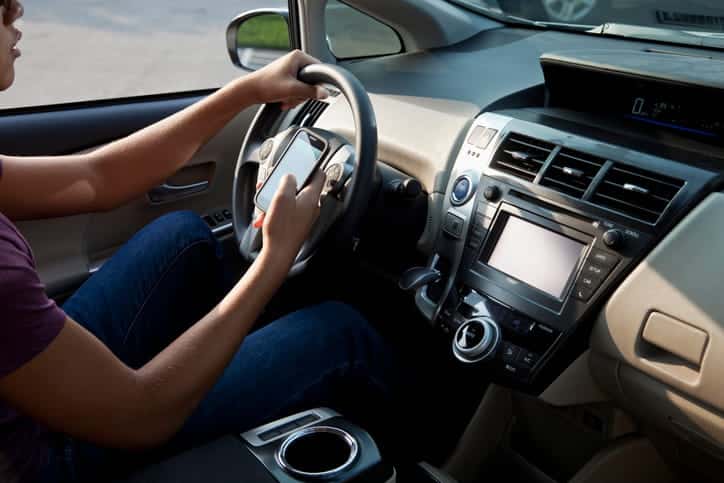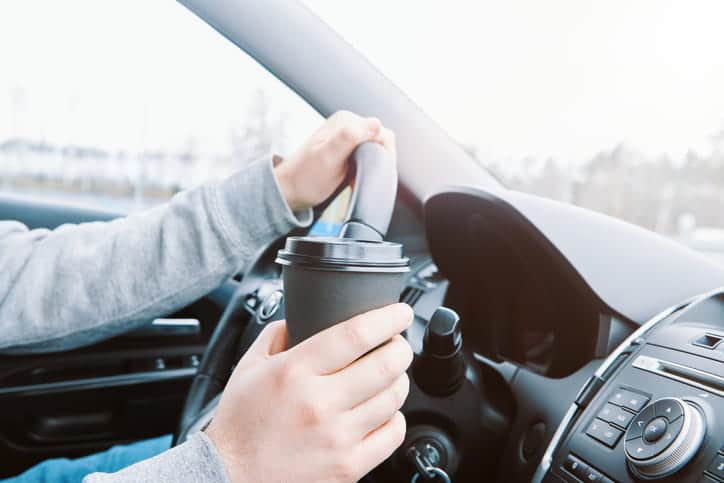What Are the Three Main Categories of Distracted Driving?

As of 2020, there were well over 275 million registered vehicles in the United States. Since the U.S. had an adult population of 258.3 million in 2020, there was more than one registered vehicle for every person 18 or older, highlighting the prevalence of motor vehicles in the United States.
Although vehicles are necessary for most people, motor vehicle accidents caused 21% of all accidental deaths and 8% of all preventable injuries in 2020. Common causes of motor vehicle accidents include:
- Traffic violations
- Driving under the influence
- Driving while distracted
Distracted driving accounts for almost 9% of all motor vehicle accident fatalities. Distracted driving accidents fall within three main categories. Understanding these categories can help drivers reduce distractions while driving and clarify why you may have a legal case if you were injured in an accident caused by a distracted driver.
What is distracted driving?
Drivers perform multiple tasks while driving. They apply brakes or gas when they need to adjust their speed. They use signal lights to indicate their intentions, change lanes or make turns, and listen for indications of potential issues that could affect them. For example, a honking horn could precede a collision, which could obstruct the road, or a train whistle may alert drivers to an active rail crossing in use. Drivers also watch for changes in road conditions to avoid collisions.
Distracted driving refers to instances when a driver engages in activities that impair their ability to focus on the necessary tasks of driving. Common examples of distracted driving include talking on cell phones, driving and eating, and interacting with passengers.
What are the three main categories of distracted driving?

There are three classifications for distracted driving accidents. These categories refer to the nature of the distraction and how it prevents them from performing crucial driving tasks. The three categories are cognitive, manual, and visual distractions.
Cognitive distractions
Cognitive distractions refer to mental distractions. A mentally distracted driver may be daydreaming about an upcoming event, trying to decide how to handle a professional or personal problem, or calculating their monthly expenses. Any time a driver thinks about something other than the road, they’re cognitively distracted.
Manual distractions
Manual distractions are physical distractions that prevent drivers from using both hands while operating a vehicle. A driver who takes their hand off the steering wheel to activate their turn signal isn’t manually distracted because they’re using both hands to operate the vehicle. However, a driver is manually distracted if they take their hand off the wheel to engage in tasks unrelated to driving. Multitasking while driving causes manual distractions, and typical examples of manual distractions include adjusting the radio or eating a sandwich.
Visual distractions
Visual distractions are activities that prompt the driver to look at something other than the road. Looking at a cell phone, passenger, or magazine are some examples of visual distractions.
Which distracted driving habits are most dangerous?
The most dangerous types of distracted driving involve more than one category of distracted driving.
Suppose a driver wants to make a social media post. This could involve a cognitive distraction while considering what they want to say. Creating the post may also cause a manual distraction if they pick up their smartphone and type it. Posting will also create a visual distraction if they look at their phone instead of the road. Combining all three types of distracted driving significantly reduces the driver’s attention and increases their chances of causing an accident.
How does distracted driving affect driver liability after an accident?
Car accident victims can seek economic and non-economic damages after their accident. However, juries may also award punitive damages to distracted driving victims, increasing the compensation the victim receives.
Punitive damages rely on proving the at-fault driver was guilty of gross negligence. Accident victims may also receive punitive damages if the at-fault driver engaged in willful misconduct. For example, a driver choosing to text or create social media posts while driving could be guilty of misconduct because they caused an accident while breaking traffic laws.
How can a car accident attorney help you after a distracted driving accident?

Car accident victims must cope with practical, physical, and personal matters following their accident. They may need to get their vehicle fixed or replaced. They may need medical care for physical injuries, and they may also be dealing with mental health issues, such as Post-Traumatic Stress Disorder (PTSD). After an accident, a victim may struggle with injuries that prevent them from engaging in routine activities, such as caring for their children.
Hiring an experienced car accident attorney can reduce stress after a distracted driving accident. Your attorney will gather the evidence to build your case. They’ll handle pretrial negotiations and prepare the legal paperwork to ensure your case is heard. Learn how the experienced attorneys at Bernstein & Maryanoff Injury Attorneys can help you get compensation for your post-accident expenses and pain and suffering.
NO FEES UNLESS WE WIN
Protecting Your Rights Since 1983
Contact Bernstein & Maryanoff Injury Attorneys’s car accident attorneys today for a free consultation.
Hablamos Español
Sources:
Number of motor vehicles registered in the United States from 1990 to 2020. (2023).
Ogunwole, S. et al. (2021). Population Under Age 18 Declined Last Decade.
Top 10 Preventable Injuries. (2023).
About the Author

Jack G. Bernstein, ESQ.
Jack Bernstein is a hard-working and highly motivated personal injury attorney in Miami, Florida with over three decades of experience. He is a strategist and idea person, with a genuine passion for helping his firm’s clients. If you’ve been injured, contact Jack Bernstein today for a free evaluation of your case.
